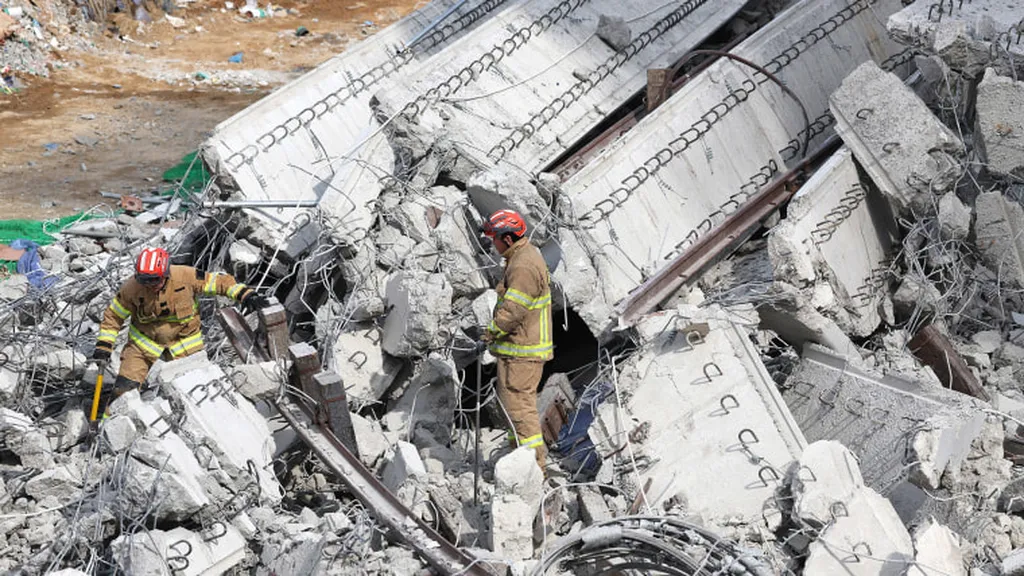In the quest to bolster the seismic stability of port structures, a team of researchers led by Jung-goo Kang from the Department of Civil Engineering at Gwangju University in South Korea has made significant strides. Their focus? Developing a high-weight backfill material that could potentially revolutionize how we approach port construction in earthquake-prone areas.
The team’s innovative solution combines basic oxygen furnace slag (BOFs), an industrial by-product, with marine dredged clay (MDC) soils. This combination, they found, could address the limitations of conventional light weight treated soils (LTS), which often struggle to meet stability requirements under seismic conditions due to their limited weight.
“Our study proposes a high weight backfill material that leverages industrial by-products, specifically BOFs and MDC soils,” Kang explained. “We utilized aged, aggregate type BOFs and a small amount of cement as the primary binder, along with marine dredged clay soil as the main matrix.”
The researchers conducted a series of tests, including surface roughness measurements, direct shear tests, and unconfined compressive strength (UCS) tests. They considered key mix design variables such as BOFs particle size and content, cement addition and dosage, water content, and curing times.
Their findings were promising. An increase in BOFs particle size significantly enhanced interfacial roughness and shear strength parameters, such as cohesion and internal friction angle. Moreover, the unit weight of the mixture tended to increase with both the particle size and content of BOFs. The unconfined compressive strength (UCS) was notably improved under conditions of low water content and high BOFs content.
Kang noted, “Although the effects of particle size and content varied, the inclusion of a small amount of cement (5%) led to a marked improvement in strength development.”
The study also developed a predictive model for the UCS of BOFs-MDC weight soil based on the BOFs volume fraction, curing time, and a particle size coefficient. This model could potentially streamline future mix designs and field applications.
The research, published in the journal “Case Studies in Construction Materials” (translated from Korean as “건설 재료 사례 연구”), offers a foundation for optimal mix design and practical field applications in seismic-prone port environments. It elucidates the fundamental mechanical behavior of BOFs-MDC weight soil mixtures, paving the way for future developments in the field.
For the energy sector, this research could have significant commercial impacts. Port structures are crucial for energy infrastructure, and enhancing their seismic stability could lead to more reliable and resilient energy transportation and storage facilities. As the world grapples with the challenges of climate change and the need for sustainable infrastructure, this research offers a promising avenue for exploration.
In the words of Kang, “Our findings could potentially shape future developments in the field, offering a more sustainable and effective solution for port construction in seismic-prone areas.”

